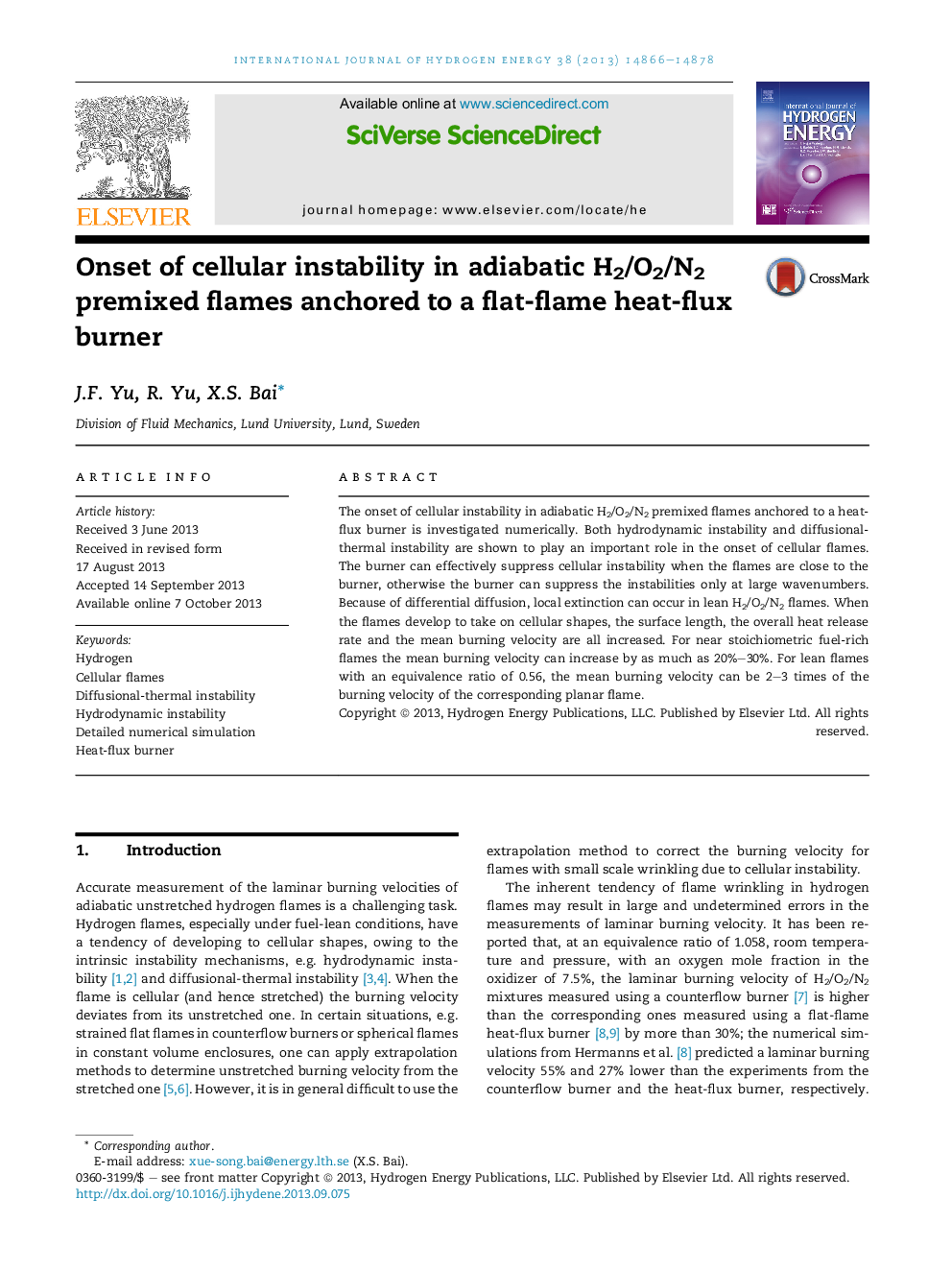| Article ID | Journal | Published Year | Pages | File Type |
|---|---|---|---|---|
| 7721547 | International Journal of Hydrogen Energy | 2013 | 13 Pages |
Abstract
The onset of cellular instability in adiabatic H2/O2/N2 premixed flames anchored to a heat-flux burner is investigated numerically. Both hydrodynamic instability and diffusional-thermal instability are shown to play an important role in the onset of cellular flames. The burner can effectively suppress cellular instability when the flames are close to the burner, otherwise the burner can suppress the instabilities only at large wavenumbers. Because of differential diffusion, local extinction can occur in lean H2/O2/N2 flames. When the flames develop to take on cellular shapes, the surface length, the overall heat release rate and the mean burning velocity are all increased. For near stoichiometric fuel-rich flames the mean burning velocity can increase by as much as 20%-30%. For lean flames with an equivalence ratio of 0.56, the mean burning velocity can be 2-3 times of the burning velocity of the corresponding planar flame.
Related Topics
Physical Sciences and Engineering
Chemistry
Electrochemistry
Authors
J.F. Yu, R. Yu, X.S. Bai,
